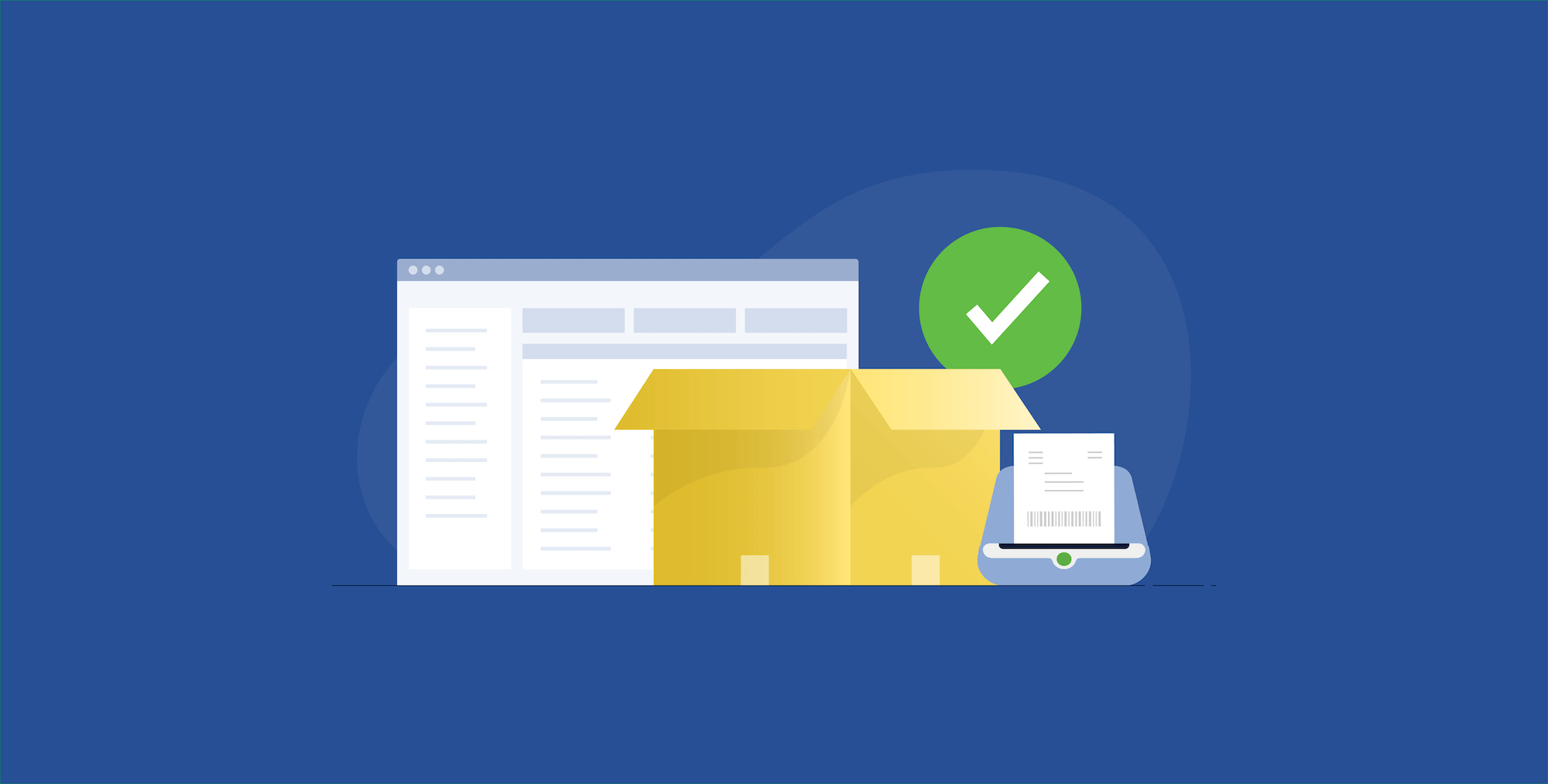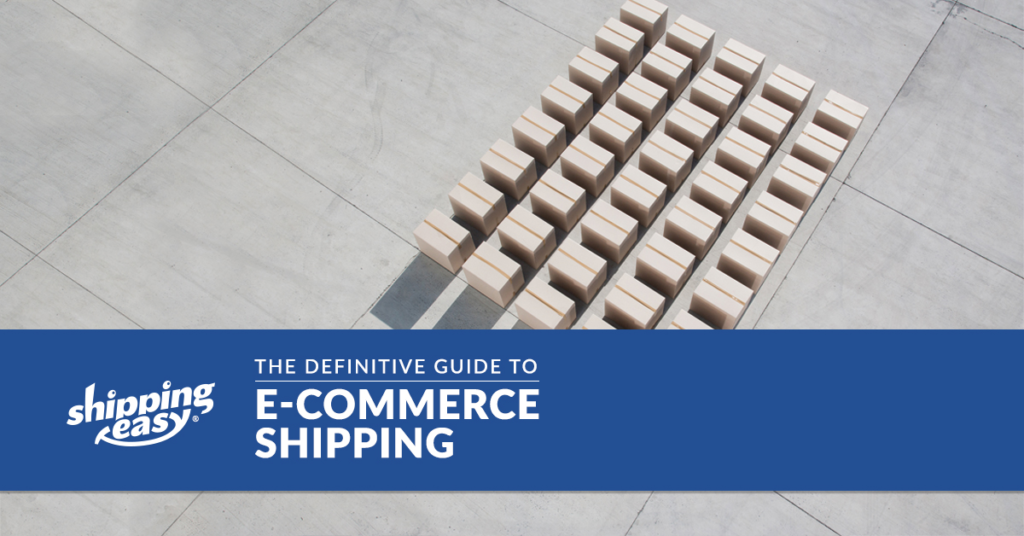Growing e-commerce merchants feel the burden of trying to do more with less as they adjust to higher order volume and customer demand. There’s no time to waste on outdated practices and manual processes. In this article, we’ve outlined some key ways to streamline shipping fulfillment for your business as you begin to grow and evolve.
Automation is key to streamline shipping fulfillment
The term “automation” makes this crucial element of e-commerce success sound more complicated than it really is. One way to set up automation is with sets of if/then rules that trigger when certain parameters are met. Automation can also be built into certain software solutions, such as ShippingEasy.
What this means for your shipping fulfillment is fewer decisions made each time an order comes in. If you’re doing the same task every time an order comes in that fits a set of conditions, why continually have to make that decision? Let’s look at a couple of examples where automation can make your shipping fulfillment much easier.
Packages under 1 pound
For any packages weighing 15.999 oz. or less, you simply cannot find a cheaper quality option than USPS First Class Package service. You can use your own packaging, your package will typically arrive within a few days, and the cost savings can be massive.
Let’s say you’re shipping a 7 oz. package to Zone 3
- FedEx Ground: $8.58 (not including fees and $4 residential surcharge)
- UPS Ground: $8.65 (not including fees and surcharges)
- USPS Priority Mail: $7.35 (USPS Commercial Rates)
- USPS First-Class Package: $3.23 (USPS Commercial Rates)
On a single package, you’re looking at a minimum of a $4 savings in this instance. Over a month’s worth of shipments, that adds up quickly. Even using small flat rate options for the carriers above doesn’t come close to the cost savings of USPS First-Class Package Service.
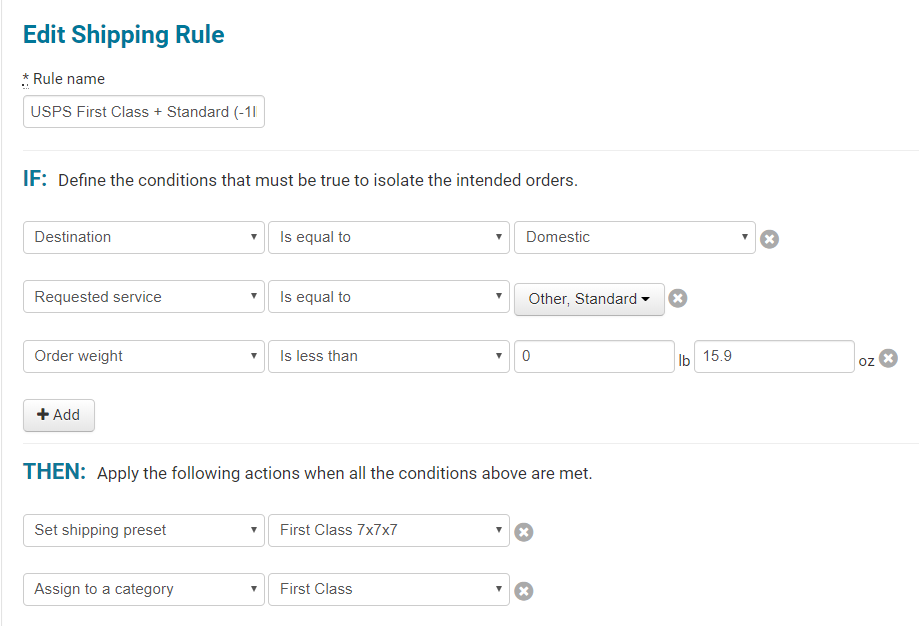
Automation can be triggered when you have weights associated with your products. A shipping solution can trigger First-Class Package Service as the shipping method any time an order weight comes in under one pound. ShippingEasy takes it one step further and does this automatically with our feature called InstantRate. No need to even set up the rule manually!
Flat Rate Options
All of the major carriers offer flat rate shipping options: UPS has Simple Rate, FedEx has One Rate, and USPS offers Flat Rate and Regional Rate options.
There are instances where each of these has a benefit over another shipping option. As a busy merchant trying to grow your business, you don’t have time to make that situational comparison every time you go to ship an order, right? This is where automation rules can really streamline your shipping fulfillment processes.
There are many factors that can go into this: product weight, whether the product will fit in the predetermined box sizes of USPS and FedEx or if you need to use your own box, the distance the package will be traveling, etc.
Want the most complete breakdown of flat-rate shipping options across all major carriers? Download our free guide!
When you have rules at your disposal to automate this decision, saving money on heavier packages can become easy. Have an 18 lb. package heading to the next town over? USPS Regional Rate might be your best bet. Have an odd-shaped 22 lb. product that won’t fit in a standard rectangular flat rate box? UPS Simple Rate might be the answer. Automate those decisions to regain hours in your week.
Keep your shipping station organized
Just like a cluttered desk can become a distraction and kill your productivity, a cluttered shipping workspace can slow down your productivity. If you haven’t in a while, it may be worth taking the time to evaluate your space.
Take a step back and consider:
- Does the flow of your workspace match the flow of your shipping process, or are you constantly moving back and forth?
- Are your most-used packing materials in close proximity and easy to grab from your shipping station?
- Are there items in your way, either permanently like a shelf or temporarily like a pallet that hasn’t been put away? How can you optimize or work around that in a better, more productive way?
- Do you have your bin locations in your product catalog? This can make your pick lists as effective as possible.
- Are there any…distractions creeping around your shipping station, as our customer Commit30 sent us a photo of? (This was part of our Show Us Your Ship contest a while back, so it was all in good fun!)
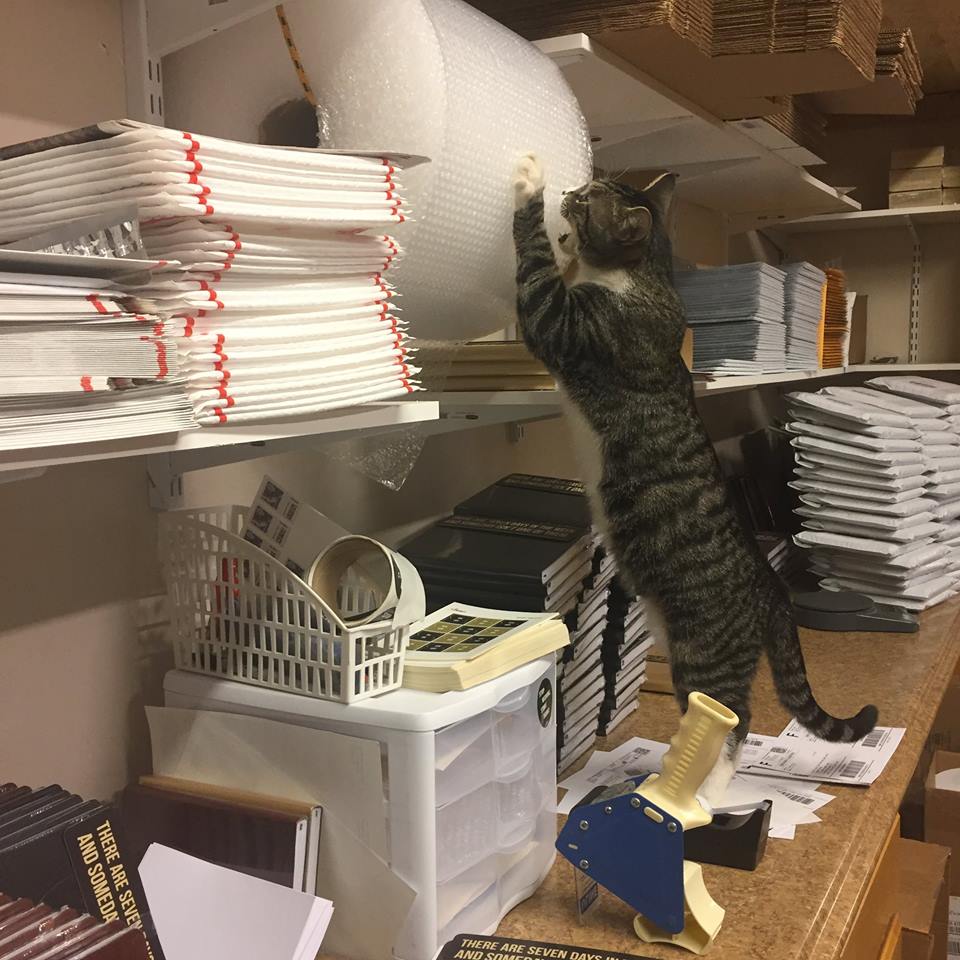
Furballs aside, taking an objective look at the area where you spend time on your shipping fulfillment can be a gamechanger for the productivity of you and your staff.
Re-evaluate your pick and pack process
The station where you process your orders isn’t the only physical place you can optimize. Your pick and pack process is an important aspect of streamlining your shipping fulfillment. Let’s look at some parts of the pick and pack process you can optimize to make your life in e-commerce substantially easier.
Picking process
When was the last time you took a long hard look at where your products are compared to where you’re processing your orders? Do you find yourself following a standard path, or constantly doubling back and retracing your steps? Does the location of each product make sense in the typical fulfillment flow you follow?
Investing a little time in optimizing your pick process can pay major dividends down the line. The physical location of products isn’t the only way you can optimize your pick lists, particularly when you begin batching orders (which we’ll talk about in a sec).
Optimizing the pick lists themselves so they are ordered and structured in the most logical way can impact your process significantly. This saves time for you or your employees so you can make the fewest trips necessary when fulfilling orders.
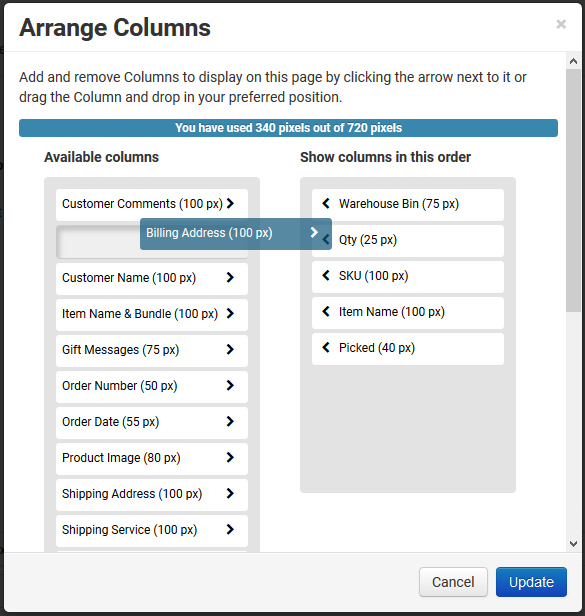
Manually weighing and measuring packages
Plenty of merchants are processing orders one-by-one, packing up their orders, and manually weighing each individual package. This can be a tedious process and eat away at hours of time for online merchants. Making this process better is one of the major benefits of a shipping solution.
When you enter your product weights into a product catalog within a shipping solution, you no longer have to weigh each individual order. The software does the math for you, and you can even add extra to account for packaging.
A shipping solution like ShippingEasy will have all the standard package sizes already loaded within the platform. All you’ll need to do is select the carrier service from a dropdown menu. You should even be able to save custom package types if you use non-standard packaging, saving you the time from measuring or the headache (or possible mistakes) that comes with remembering the dimensions of packaging you use.
An additional benefit here is having automation choose the right carrier, service, and packaging for you, as mentioned previously.
One-by-one label generation
When you’re processing your orders one-by-one, you’re also printing your labels the same way. You don’t have time for that in today’s fast-moving world of e-commerce. Batch printing is a key to success for merchants of all sizes, especially those who are growing.
Maybe we’re just a bunch of shipping nerds, but there is something satisfying about watching all those labels feed out of a printer, ready to be slapped on a box and shipped out.
Note: when shipping USPS, you can also print a SCAN form and schedule a pick up so you avoid standing in line at the post office. When your carrier only has a single barcode to scan for all your packages, they will thank you. Both of these factors become more and more important as your business grows.
Follow your guide
This article only scratches the surface of the entire process e-commerce merchants go through. There is so much more to know and there are plenty of decisions to be made as your business continues to try to streamline shipping fulfillment. That’s why we put together the Definitive Guide to E-commerce Shipping. It covers the fulfillment process end to end with ways to improve your business’s processes along the way. Click the image below to download it for free!
Rob Zaleski
Latest posts by Rob Zaleski (see all)
- USPS 2023 Shipping Rate Changes - November 16, 2023
